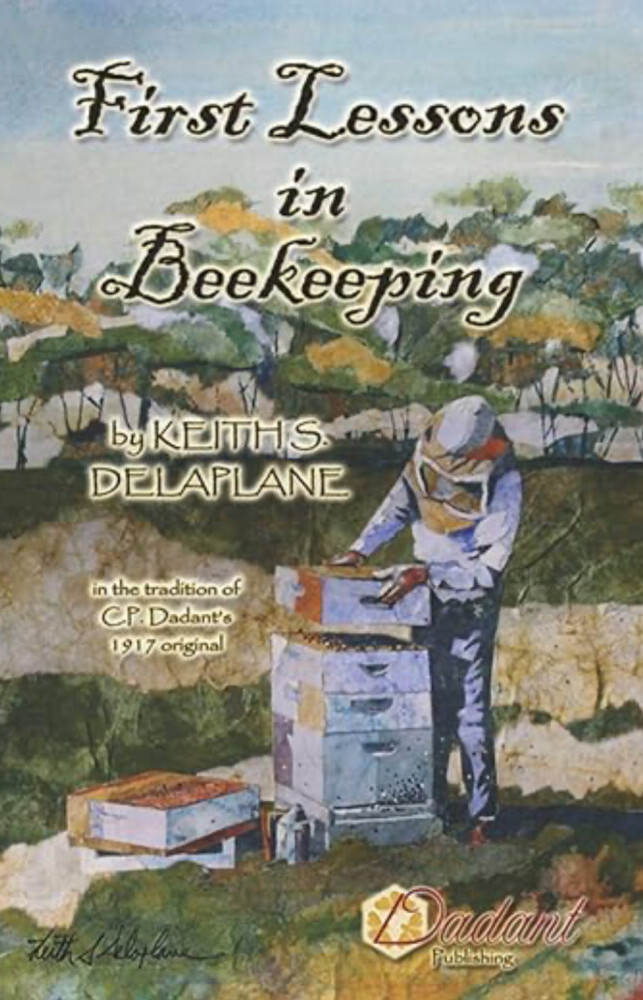In-Depth Review: First Lessons in Beekeeping
- Introduction to the book and author: Overview of the book’s purpose and the author’s background in beekeeping.
- Structure and content: Breakdown of the book’s layout, including chapters and main topics covered.
- Practical insights and techniques: Discussion of the practical advice and step-by-step instructions provided in the book.
- Accessibility to beginners: Analysis of how well the book caters to new beekeepers, including ease of understanding and application of techniques.
- Comparative analysis: How this book stands out compared to other beekeeping guides available in the market.
- Reader testimonials: Summary of existing reader reviews and personal testimonials, highlighting experiences and outcomes.
 “First Lessons in Beekeeping” by C.P. Dadant is a classic text that has guided generations of beekeepers through their first steps in the world of beekeeping. Originally published by the founder of the Dadant beekeeping supply company, this book has been updated over the years to stay relevant while still holding onto its timeless wisdom. It serves as an excellent resource for beginners, covering everything from bee biology to practical hive management techniques.
“First Lessons in Beekeeping” by C.P. Dadant is a classic text that has guided generations of beekeepers through their first steps in the world of beekeeping. Originally published by the founder of the Dadant beekeeping supply company, this book has been updated over the years to stay relevant while still holding onto its timeless wisdom. It serves as an excellent resource for beginners, covering everything from bee biology to practical hive management techniques.
Overview
The book provides a solid foundation for anyone new to beekeeping, focusing on the essentials needed to establish and maintain a healthy apiary. Its straightforward style and clear explanations make it easy to follow, even for those with no prior knowledge of beekeeping. C.P. Dadant’s passion for bees and extensive experience shine through, making this book both informative and inspiring for novice beekeepers.
Key Highlights
- Understanding Honeybee Biology:
-
- Dadant begins by explaining the anatomy and behavior of honeybees, including the different roles of the queen, workers, and drones within the colony.
- The book delves into the life cycle of honeybees and the importance of each caste’s specific duties, which helps readers appreciate the complex social structure of the hive.
- Setting Up Your First Apiary:
-
- There are clear, step-by-step instructions on how to choose a location for your hives, select the right equipment, and understand the various components of a standard Langstroth hive.
- Dadant offers guidance on purchasing bees, whether you’re getting a nuc (nucleus colony), package bees, or established hives, and how to install them properly.
- Hive Management Practices:
-
- The book covers essential hive management techniques, including seasonal tasks like feeding, swarm control, inspecting hives, and preparing for winter.
- Practical advice is given on dealing with common beekeeping challenges, such as pests, diseases, and environmental factors that affect bee health.
- Honey Production and Harvesting:
-
- Dadant’s instructions on how to extract honey are clear and concise, making it easy for beginners to understand the process from hive to jar.
- He also touches on other hive products like beeswax, pollen, and propolis, encouraging beekeepers to maximize the use of what their colonies produce.
- Practical Beekeeping Tips:
-
- Throughout the book, Dadant provides useful tips and tricks to make beekeeping easier and more productive. His recommendations on handling bee stings, protective clothing, and the best times of day to work with bees are especially valuable for those just starting out.
- The emphasis on understanding bee behavior and working in harmony with the colony’s natural instincts helps beginners develop a more intuitive approach to hive management.
Strengths
- Beginner-Friendly Approach: The book is written in a clear, accessible style that makes it easy for newcomers to grasp the basics of beekeeping without feeling overwhelmed.
- Timeless Wisdom: Although the original publication is decades old, many of the principles discussed in the book remain relevant to beekeeping today.
- Comprehensive Guide: From hive setup and bee biology to honey extraction and seasonal care, it covers all the essential topics that a beginner needs to know.
Areas for Improvement
- Outdated Information: Some of the book’s information on pest management and hive treatments might not reflect the latest research or modern techniques. Beginners might need to supplement this with up-to-date resources on managing pests like Varroa mites.
- Limited Focus on Environmental Impact: While the book does an excellent job with foundational beekeeping techniques, it lacks a deeper discussion on the broader environmental and ecological issues that impact bee health today.
Conclusion
“First Lessons in Beekeeping” by C.P. Dadant remains a go-to guide for anyone looking to start their journey into beekeeping. Its practical advice, clear instructions, and solid foundation in the basics of hive management make it an indispensable resource for beginners. Despite some of the older content, the principles and techniques outlined in the book are still highly relevant and provide a great starting point for understanding the art and science of beekeeping.
For those interested in exploring this field, Dadant’s book offers an excellent balance of theoretical knowledge and hands-on practices, making it both an informative read and a practical manual for getting started in beekeeping. Its enduring value lies in its straightforward approach and the solid foundation it provides for anyone eager to learn about the world of honeybees and their care.
